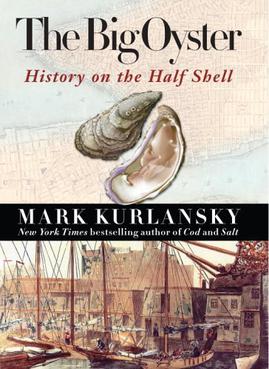The Big Oyster: History on the Half Shell
The Big Oyster: History on the Half Shell is a comprehensive book that delves into the rich and fascinating history of oysters in New York City. Authored by Mark Kurlansky, the book was published in 2006 and has since become a seminal work in the field of culinary history. It explores the significant role that oysters have played in the social, economic, and environmental landscape of New York from the early days of the Dutch settlers to the 20th century.
Overview[edit | edit source]
The book begins by painting a vivid picture of the abundance of oysters in the waters surrounding New York City, describing how these bivalves were a staple in the diet of the Native American tribes living in the area. As European settlers arrived and the city began to grow, oysters became a critical part of New York's burgeoning economy, with oyster beds in places like the Hudson River and the East River being exploited for both local consumption and export.
Kurlansky details the golden age of the New York oyster industry in the 19th century, a time when the city was known as the oyster capital of the world. He describes the various ways in which oysters were consumed, from street vendors selling raw oysters to upscale oyster houses that became social hubs for the city's elite. The book also explores the cultural significance of oysters, highlighting their presence in literature, art, and popular culture of the time.
However, The Big Oyster does not shy away from the darker aspects of the industry's history. Kurlansky discusses the environmental degradation caused by overharvesting and pollution, which led to the decline of oyster populations and the eventual collapse of the industry in the early 20th century. He also touches on the public health concerns associated with consuming raw oysters, including outbreaks of cholera and typhoid.
Themes[edit | edit source]
The book covers several key themes, including sustainability, environmental conservation, and the impact of human activity on natural resources. Kurlansky uses the story of the New York oyster industry as a cautionary tale, illustrating the consequences of exploiting natural resources without regard for long-term sustainability. He also emphasizes the importance of preserving cultural heritage and the role of food in shaping the identity of a city.
Reception[edit | edit source]
The Big Oyster: History on the Half Shell has been praised for its thorough research, engaging narrative, and the author's ability to weave together various strands of history into a cohesive and compelling story. Critics have lauded Kurlansky's skill in making a seemingly narrow topic accessible and interesting to a broad audience.
Legacy[edit | edit source]
The book has contributed significantly to the public's understanding of New York's culinary history and has sparked interest in oyster restoration efforts in the city's waterways. It serves as an important reminder of the need for sustainable practices in the exploitation of natural resources and the preservation of cultural heritage.
- Need help finding a doctor or specialist anywhere in the world? WikiMD's DocFinder can help with millions of doctors!
| This article is a stub. Help WikiMD grow by registering to expand it. |
Navigation: Wellness - Encyclopedia - Health topics - Disease Index - Drugs - World Directory - Gray's Anatomy - Keto diet - Recipes
Search WikiMD
Ad.Tired of being Overweight? Try W8MD's physician weight loss program.
Semaglutide (Ozempic / Wegovy and Tirzepatide (Mounjaro / Zepbound) available.
Advertise on WikiMD
WikiMD is not a substitute for professional medical advice. See full disclaimer.
Credits:Most images are courtesy of Wikimedia commons, and templates Wikipedia, licensed under CC BY SA or similar.Contributors: Prab R. Tumpati, MD

